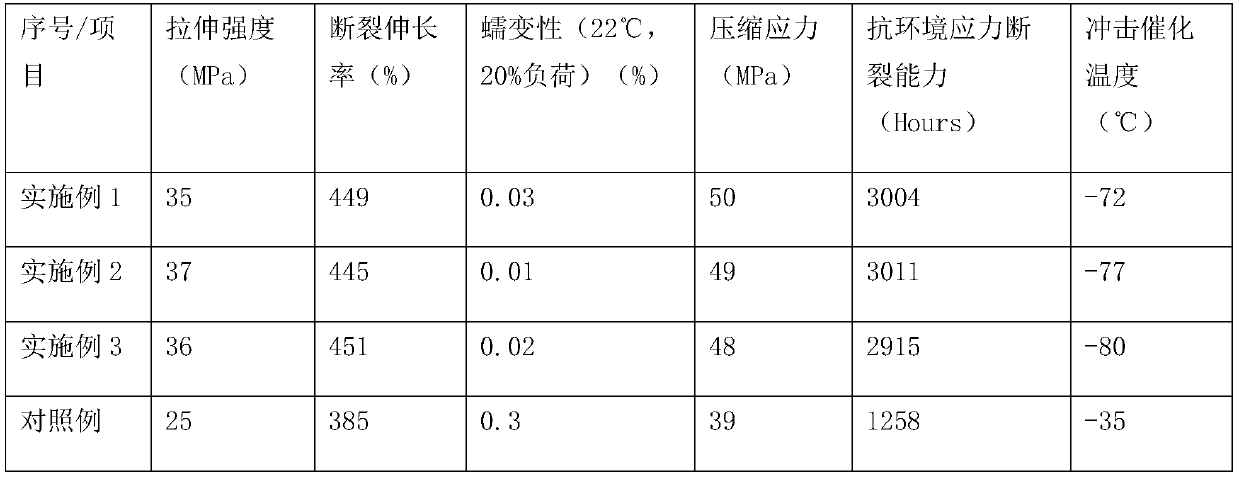Production method for bus duct cable tray
A production method and technology of bus duct, applied in the field of bus duct bridge, can solve the problems of high brittleness, heavy overall weight, large shrinkage rate, etc., to increase elongation at break and yield strength, eliminate melt defects and product sink marks , Improve the effect of environmental stress cracking phenomenon
- Summary
- Abstract
- Description
- Claims
- Application Information
AI Technical Summary
Problems solved by technology
Method used
Image
Examples
Embodiment 1
[0017] A method for producing a bus duct bridge, the method is as follows:
[0018] (1) Take 72 parts of high-density polyethylene and 43 parts of medium-density polyethylene in parts by mass and stir evenly in a reactor, then add 22 parts of cross-linking agent and 6 parts of initiator to carry out cross-linking modification, said The crosslinking agent is composed of triallyl isocyanurate and anilinomethyltrimethoxysilane in a mass ratio of 1:1, the initiator is dicumyl peroxide, and the reaction temperature of crosslinking modification is 200 ℃, the reaction time is 2h;
[0019] Place in the open mill and add 2 parts of catalyzers, 11 parts of maleic anhydride, and 5 parts of polymerization inhibitors to carry out melt graft polymerization, the catalyst is dibutyltin dilaurate, and the polymerization inhibitors are Polymerization agent 510, the reaction temperature of the melt graft polymerization reaction is 205°C, the reaction time is 5h, and then poured into acetone for...
Embodiment 2
[0023] A method for producing a bus duct bridge, the method is as follows:
[0024] (1) Take 62 parts of high-density polyethylene and 39 parts of medium-density polyethylene in parts by mass and stir evenly in a reactor, then add 23 parts of cross-linking agent and 5 parts of initiator to carry out cross-linking modification, said The crosslinking agent is formed by mixing vinyl tributylketoxime silane and anilinomethyltrimethoxysilane in a mass ratio of 1:1, the initiator is dicumyl peroxide, and the reaction temperature of crosslinking modification is 202°C, the reaction time is 3h;
[0025] Place in the open mill and add 2 parts of catalyzers, 9 parts of maleic anhydride, and 4 parts of polymerization inhibitors to carry out melt graft polymerization, the catalyst is dibutyltin dilaurate, and the polymerization inhibitors are Polymerization agent 701, the reaction temperature of the melt graft polymerization reaction is 215°C, and the reaction time is 4.5h, then poured in...
Embodiment 3
[0029] A method for producing a bus duct bridge, the method is as follows:
[0030] (1) Take 74 parts of high-density polyethylene and 35 parts of medium-density polyethylene in parts by mass and stir evenly in a reactor, then add 20 parts of crosslinking agent and 6 parts of initiator to carry out crosslinking modification, said The crosslinking agent is a mixture of triallyl isocyanurate, vinyl tributylketoxime silane and anilinomethyltrimethoxysilane in a mass ratio of 1:1:1, and the initiator is diperoxide For cumene, the reaction temperature for cross-linking modification is 195°C, and the reaction time is 3h;
[0031] Place in the open mill and add 2 parts of catalyzers, 11 parts of maleic anhydride, and 5 parts of polymerization inhibitors to carry out melt graft polymerization, the catalyst is dibutyltin dilaurate, and the polymerization inhibitors are Polymerization agent MZTQ, the reaction temperature of the melt graft polymerization reaction is 210°C, the reaction ...
PUM
 Login to View More
Login to View More Abstract
Description
Claims
Application Information
 Login to View More
Login to View More - R&D
- Intellectual Property
- Life Sciences
- Materials
- Tech Scout
- Unparalleled Data Quality
- Higher Quality Content
- 60% Fewer Hallucinations
Browse by: Latest US Patents, China's latest patents, Technical Efficacy Thesaurus, Application Domain, Technology Topic, Popular Technical Reports.
© 2025 PatSnap. All rights reserved.Legal|Privacy policy|Modern Slavery Act Transparency Statement|Sitemap|About US| Contact US: help@patsnap.com

